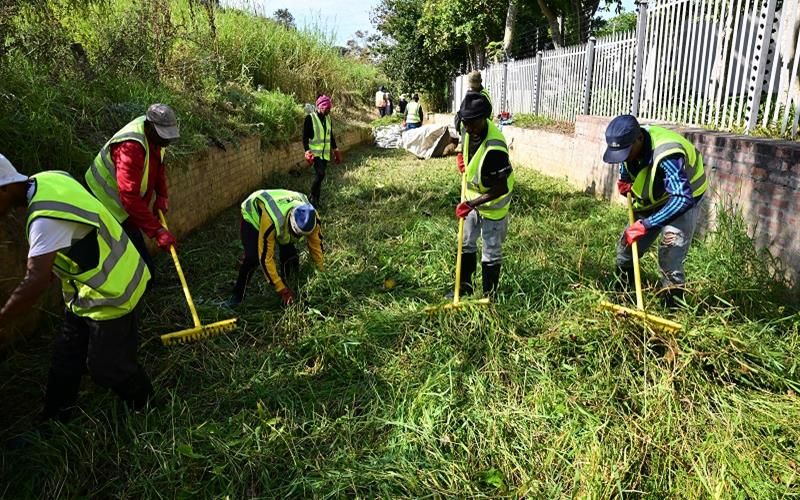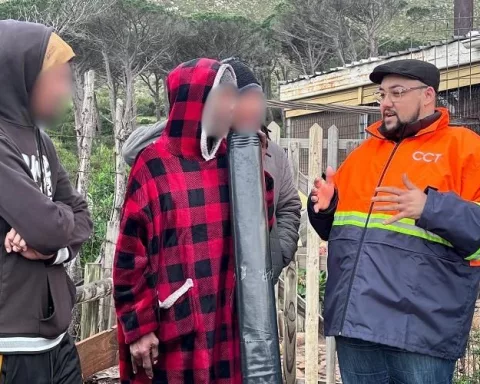Cape Town is taking a proactive approach to preserving the environment by reviving the Spaanschemats River. The city’s Water and Sanitation Directorate is manually gathering litter, unclogging drains, and curbing invasive plants to stimulate the reappearance of indigenous plant and animal life in the region. The project aligns with the city’s Mayoral Priority Programmes to improve inland water quality and mitigate flooding, and serves as a reminder of our shared duty to our natural resources and potential to effect positive change.
Unveiling Cape Town’s Proactive Approach to Preserving the Environment: Reviving Spaanschemats River
Cape Town’s Water and Sanitation Directorate has launched an extensive flood management agenda to ready itself ahead of the winter downpour, reflecting the city’s dedication to environmental preservation and flood mitigation. The initiative involves teams of workers manually gathering litter, unclogging drains, and curbing invasive plants along Spaanschemats River to stimulate the reappearance of indigenous plant and animal life in the region. The project also aligns with the city’s Mayoral Priority Programmes to improve inland water quality and mitigate flooding.
As the hue of autumn settles and winter’s icy touch is anticipated, Cape Town reveals a bustling activity along the whispering banks of the Spaanschemats River in Constantia. The City of Cape Town’s Water and Sanitation Directorate has launched a thorough and extensive flood management agenda, readying itself ahead of the winter downpour. This timely undertaking is a praise-worthy reflection of the city’s dedication to environmental preservation and flood mitigation.
The Charming Spaanschemats River
The Spaanschemats River, a delightful stream extending 5km from Silverhurst Drive to the M3 freeway, wends its way through a varied blend of public and private lands. Sadly, the river has frequently contended with the detrimental effects of garbage accumulation, silt buildup, and the intrusion of foreign invasive plant species. Acknowledging these challenges, the city has started a project that goes beyond mere winter preparations.
The flood maintenance protocol involves a wide array of tasks. Teams of committed workers laboriously gather and remove litter, unclog drains and mini silt traps, curb invasive plants, and reveal vital stormwater infrastructure such as pipes, gabions, and headwalls along the river’s periphery. Quite remarkably, most of these tasks are performed manually, reflecting the commendable dedication of the ground crews.
Holistic Approach to River Restoration
The city’s strategy extends beyond manual labor. In subsequent phases, mechanical equipment will be employed to extract the silt that has collected on the river bed. This step is paramount, as it guarantees a smoother flow of water, essential for lowering flood risks and minimizing property damage during the rainy season.
This initiative, however, is not simply about practicality. A profound ecological concern underlies it as well. By renewing the river pathway and eradicating it of artificial obstructions, the project strives to stimulate the reappearance of indigenous plant and animal life in the region. This deliberate endeavor to rejuvenate the greenbelt area echoes the wider vision of environmental guardianship that directs the city’s actions.
In 2023, the city grappled with hindrances while manually cleaning a minor segment of the river following flood damage. This occurrence underscored the necessity for a more holistic approach to river upkeep, leading to the inception of the present initiative that combines manual labor and mechanical resources for superior outcomes.
Aligning Conservation with Civic Priorities
The Spaanschemats River project is a component of the city’s forward-thinking river maintenance agenda. It aligns with the city’s Mayoral Priority Programmes, seeking to improve inland water quality and mitigate flooding, specifically with the winter precipitation in mind.
The city has devoted an impressive sum of R700,000 to this indispensable work along the Spaanschemats River. This investment is not just in the infrastructure, but also serves the local community. The project has offered employment to as many as 40 locals, thereby boosting the local economy and simultaneously safeguarding the river and its nearby environment.
Initiated by the city’s Water and Sanitation Directorate and supported firmly by Councillor Zahid Badroodien, the project aims to wrap up by June 2024 end. However, it signifies more than just a pioneering river maintenance effort. It mirrors the city’s thoughtful and proactive stance towards environmental management.
The City’s Pledge to Sustainability
This project exemplifies how urban planning and environmental preservation can coexist harmoniously and reinforce each other. It serves as a reminder of our shared duty to our natural resources and our potential to effect positive change. As the Spaanschemats River winds its way through Constantia, it will symbolize Cape Town’s vow to its environment and its citizens.
What is the Spaanschemats River project?
The Spaanschemats River project is a proactive approach by Cape Town’s Water and Sanitation Directorate to preserve the environment by reviving the Spaanschemats River. It involves manual gathering of litter, unclogging drains, and curbing invasive plants to stimulate the reappearance of indigenous plant and animal life in the region.
What is the purpose of the Spaanschemats River project?
The Spaanschemats River project aligns with the city’s Mayoral Priority Programmes to improve inland water quality and mitigate flooding. It also serves as a reminder of our shared duty to our natural resources and potential to effect positive change.
What is the importance of the Spaanschemats River?
The Spaanschemats River is a delightful stream extending 5km from Silverhurst Drive to the M3 freeway, wending its way through a varied blend of public and private lands. The project strives to stimulate the reappearance of indigenous plant and animal life in the region and rejuvenate the greenbelt area.
What is the holistic approach to river restoration?
The city’s strategy for river restoration extends beyond manual labor. In subsequent phases, mechanical equipment will be employed to extract the silt that has collected on the riverbed. This step is significant, as it guarantees a smoother flow of water, essential for lowering flood risks and minimizing property damage during the rainy season.
What is the investment for this project?
The city has devoted a sum of R700,000 to this indispensable work along the Spaanschemats River. This investment is not just in the infrastructure, but also serves the local community by offering employment to as many as 40 locals, thereby boosting the local economy and simultaneously safeguarding the river and its nearby environment.
When is the Spaanschemats River project expected to wrap up?
Initiated by the city’s Water and Sanitation Directorate and supported firmly by Councillor Zahid Badroodien, the project aims to wrap up by the end of June 2024.












